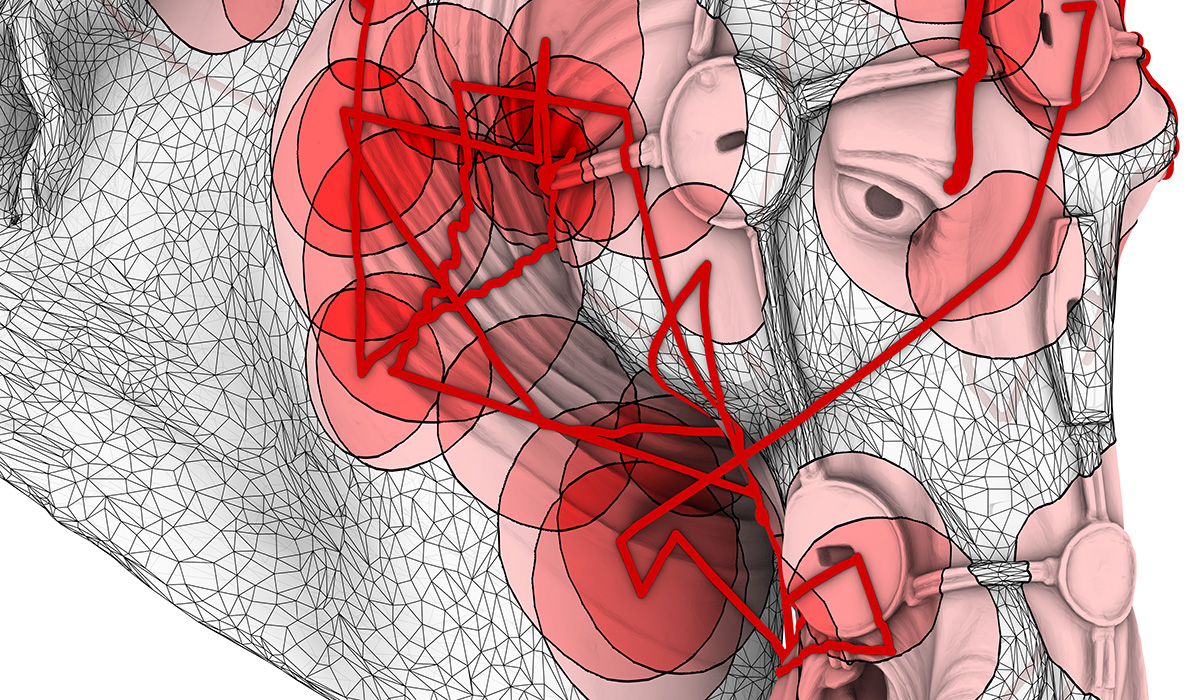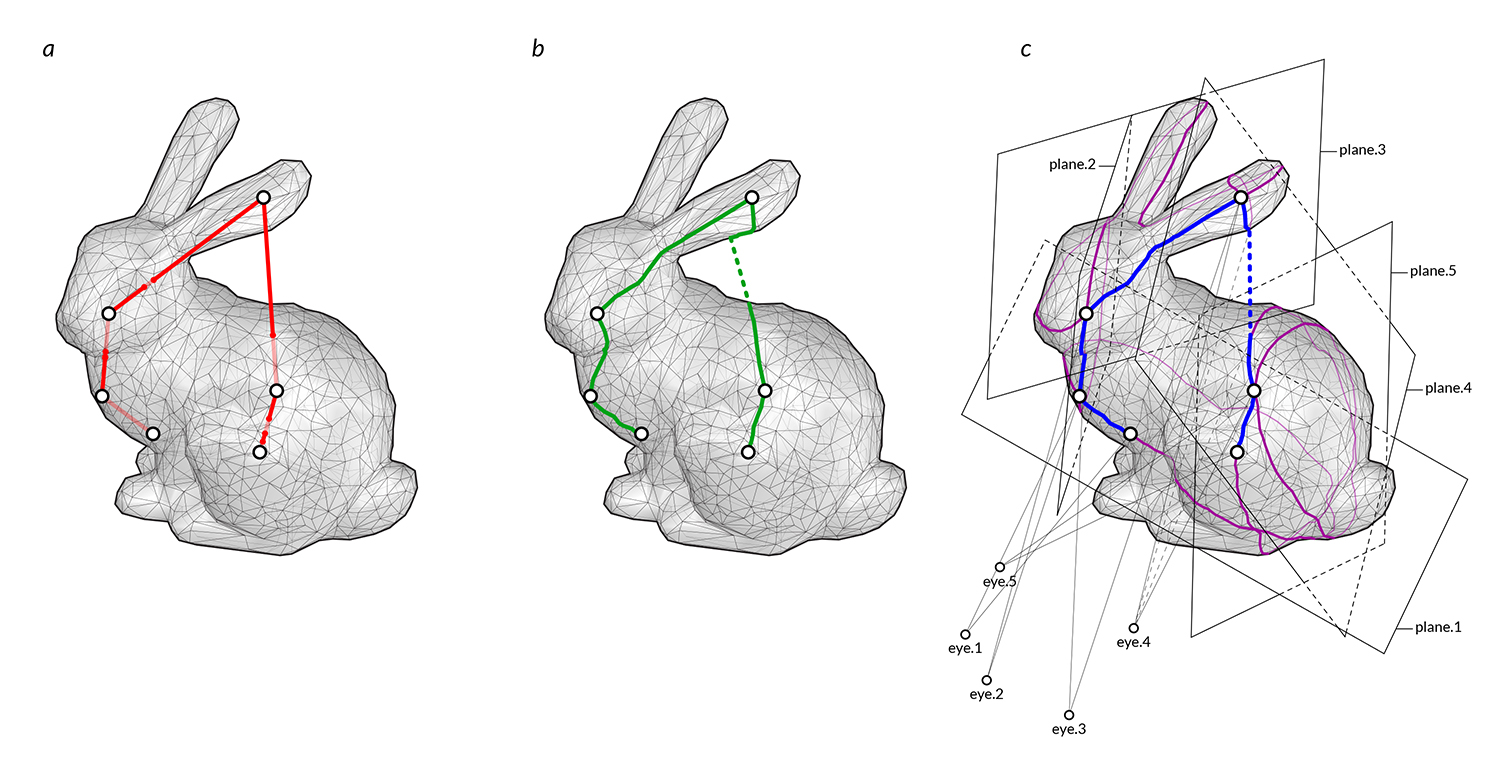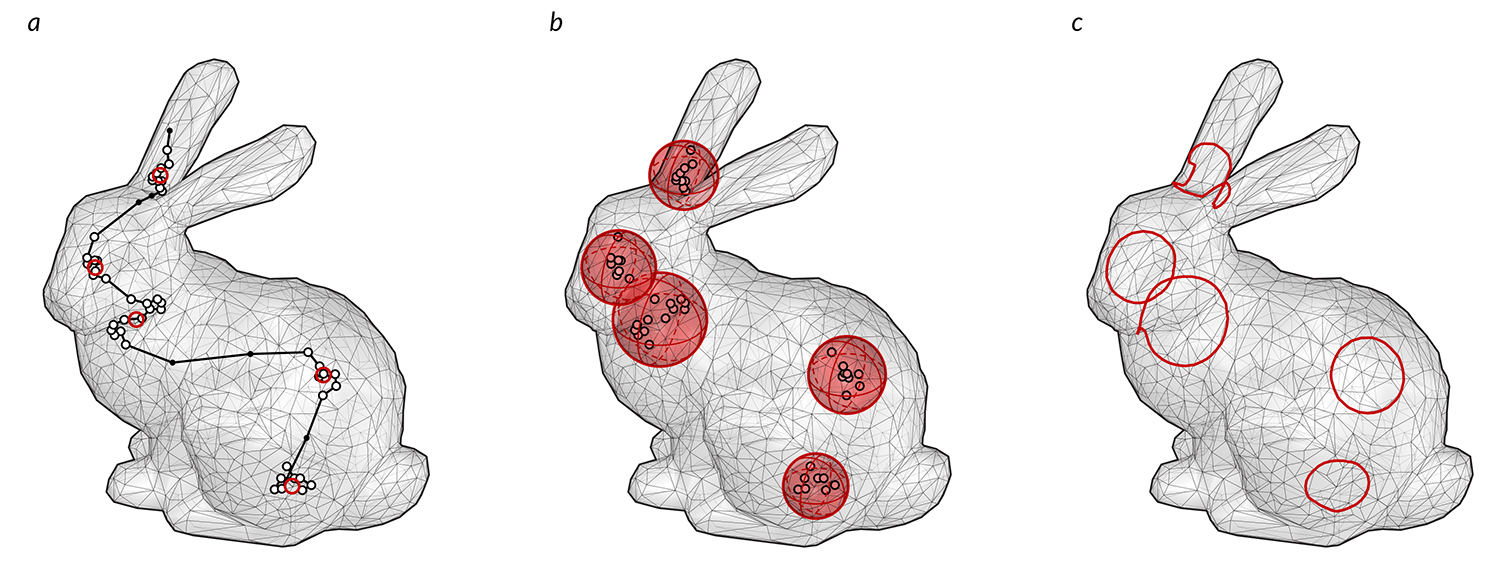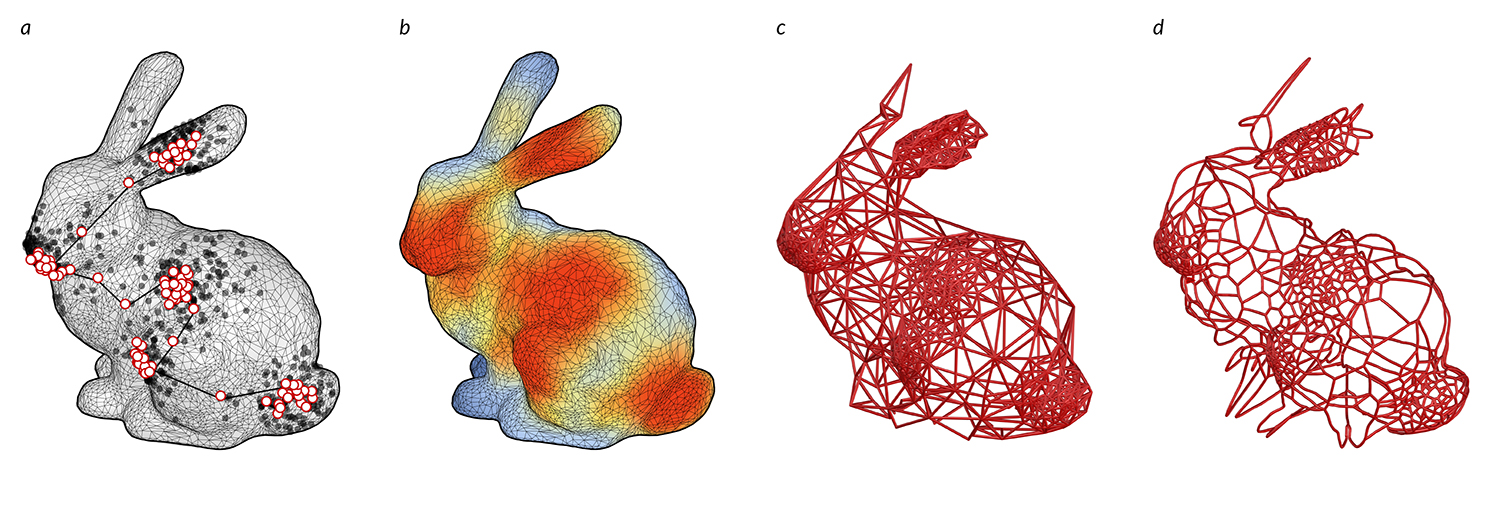
2021
Pure perception, in fact, however rapid we suppose it to be, occupies a certain depth of duration.
Henri Bergson, Matter and Memory
This research reconceives of perceptual depth by integrating Sergei Eisenstein's theory of mise-en-cadre with graphic analyses using eye-tracking data. Contrary to the commonplace understanding of depth-as-distance, it is argued that techniques such as linear perspective simulate a quantitative understanding of depth, whereas depth in perception is fundamentally qualitative. Scanpath information was taken from three recordings, in which subjects viewed a variety of images. Rather than employing eye-tracking as a means to explain perceptual behaviors, it was used to provide an additional perspective into a fundamentally aesthetic problem. Depth is conceived as the collision of intra-image moments that inform a total, yet dynamic 'picture' through a subject's perception.
Contents published as "Visualizing Spatial Gaze Data in the Perception of 3D Objects," in Leonardo (MIT Press), exp. 2023. https://doi.org/10.1162/leon_a_02308 (pre-press link)

Example of translating spatial eye-tracking data into reconstructed stimulus meshes.

Outlining alternative approaches for visualizing scanpaths across a three-dimensional mesh stimulus.

Steps in producing Areas of Interest (AOIs) onto a three-dimensional mesh stimulus.

Translation of gaze point cluster propagations into a continuous heatmap gradient, from which mesh data can be reconstructed.